"All of that other stuff – the outboard gear, the electronics – can continue to evolve but the thing that you hold close to your body, that becomes part of you… you don’t have to keep evolving that" – Fender's Justin Norvell on heritage and progression
Interview: The Big F’s executive VP of product says eyes peeled for more Road Worn finishes, artist signature Acoustasonics, and more special releases to celebrate 70 years of the Stratocaster
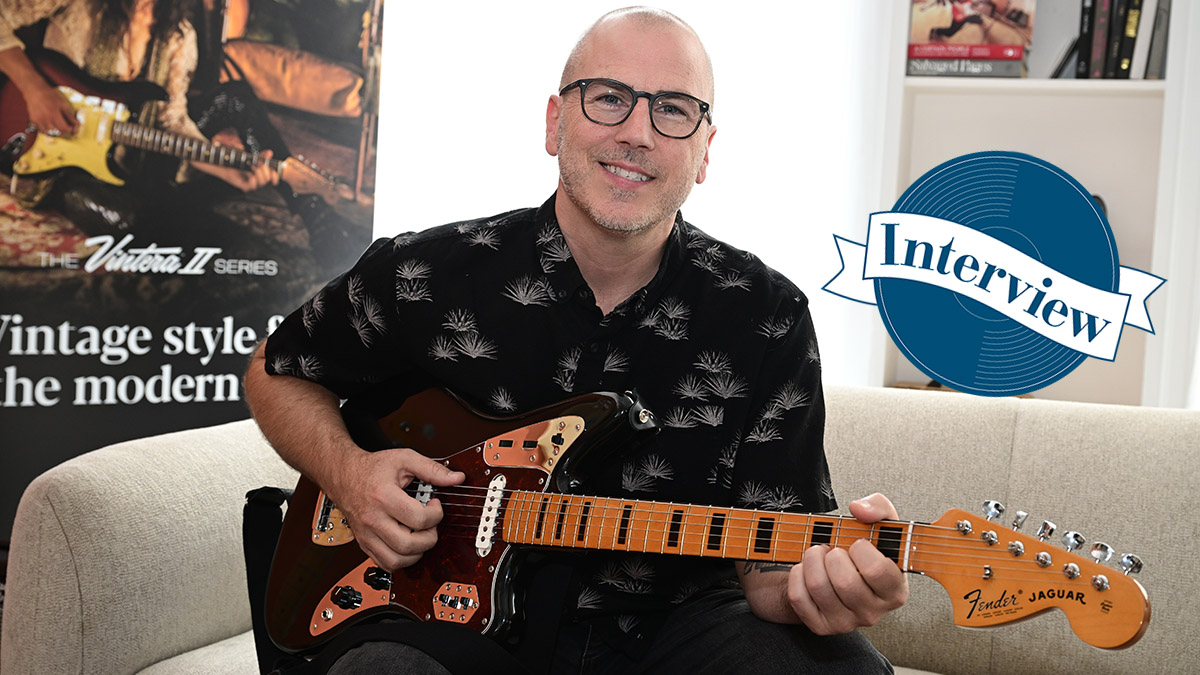
Every year at Fender is a big year but even by the Californian gear giant’s standards 2024 is especially huge, as the Stratocaster reaches the ripe old age of 70.
An occasion such as must be celebrated, and we’ve already seen the first models to mark the occasion. In September last year, Fender unveiled a quartet of limited edition 70th Anniversary Strats that referenced the past, present and future of the model.
Looking to the past we had the American Professional II and Player Series Strats with a vintage Two-Tone Sunburst makeover for that OG 1954 look. The flame maple topped AmPro II Strat in Comet Burst give us a taste of contemporary high-end electric guitar design while the Nebula Noir Player Series was refreshed with a futuristic 21st-century Black Strat vibe.
That was just a taste of things to come, and the man on the other side of our Zoom call, Justin Norvell, executive vice-president of product at Fender, knows exactly what is on the slate and when we’ll see it.
He of course “pleads the Fifth” on potential artist models but he could and did talk about where Fender is at right now, having released the Tone Master Pro, last year, and how its its flagship amp modeller was designed as an easy-to-use come hither to the digital sceptic, and he promised that, above all, 2024 was going to be a celebration of the Strat’s impact on popular culture.
You could say we are a guitar manufacturer, you could say we make amplifiers or electronics, but really we are in the creativity business and it is all about helping someone find their thing and express that
“We don’t want to just look backwards and say, ‘Oh 70 years…’ and give a black-and-white history lesson,” he says. “We want to talk about important cultural milestones, because it is there in Fender’s history.
“Whether it’s Buddy Holly on the Ed Sullivan Show, whether it’s Jimi Hendrix lighting his guitar on fire at Monterey or playing The Star-Spangled Banner at Woodstock, to Kurt Cobain at the Video Music Awards to the first Arctic Monkeys record, all of that, those are all cultural watershed moments where Fender is there, and the Stratocaster is there.”
Want all the hottest music and gear news, reviews, deals, features and more, direct to your inbox? Sign up here.
Fender has always looked to the market for inspiration, seeing what the players are doing. What is exciting you in guitar music today, and how is this shaping Fender’s strategy?
“That’s a great question. I would say really it’s the broadness of the guitar and its charge now, because a lot of people are still honouring traditions or playing blues, or in rock bands etc, but then there are people who are using guitar more as an ensemble instrument, more as a textural instrument like a keyboard, and playing through tons of effects.
“There is no right or wrong way and I think that there have been periods over time where there was, ‘This is what you do on the guitar and this is how you play the guitar.’ Y’know? After the bridge there’s the solo, and you put your foot up on the monitor... And right now, there is a diversity of not only types of music that are utilising guitar but the way that people are choosing to play those guitars, and through what equipment, and through what kind of sounds.”

“And so, as our tools are expanding, and we work on our guitars, and we work on things like the Tone Master Pro, those just offer a bigger palette of colour for people to paint with, and that’s the goal. And then, what’s the next thing going to be? That’s what gets us out of bed.
“Because I think as a 70-year-old company, we could be like, ‘If you want to play music from the ‘50s this is the tool you have to grab.’ Like a lute! You don’t pick up a lute to play modern music. It has its place and time. We are really obsessed with a retention of relevance for these things to not be a retro tool but to be a modern tool, and to be a tool to find newness on.”
And that is difficult, because it is a 20th-century instrument, and its continuing relevance comes from how people use them.
“There is reverence for the guitar in its current state. We’ve played with alternate materials. We’ve played with carbon fibre necks and all kinds of different things. We have made guitars where the electronics are on a card that you can switch out of the back of the guitar. People tend to not want a USB port on their guitar.
“Everything is wide open the moment the lead runs out of the guitar, so it’s kind of like you have to colour inside the lines on the guitar itself. Can you make the action lower? Can you make it play easier? Can you put a compound radius on it? Can you make better noiseless pickups? Can you make some cool switching?
“But that piece – the guitar itself – is held a little bit more reverent to what it needs to be. Someone can plug a beat-to-hell ’58 Strat into the most complex signal chain, of ambient, atmospheric stuff! And that’s fascinating, because you don’t usually get that kind of old-school/new-school thing that you get with guitar in a lot of other ways.”
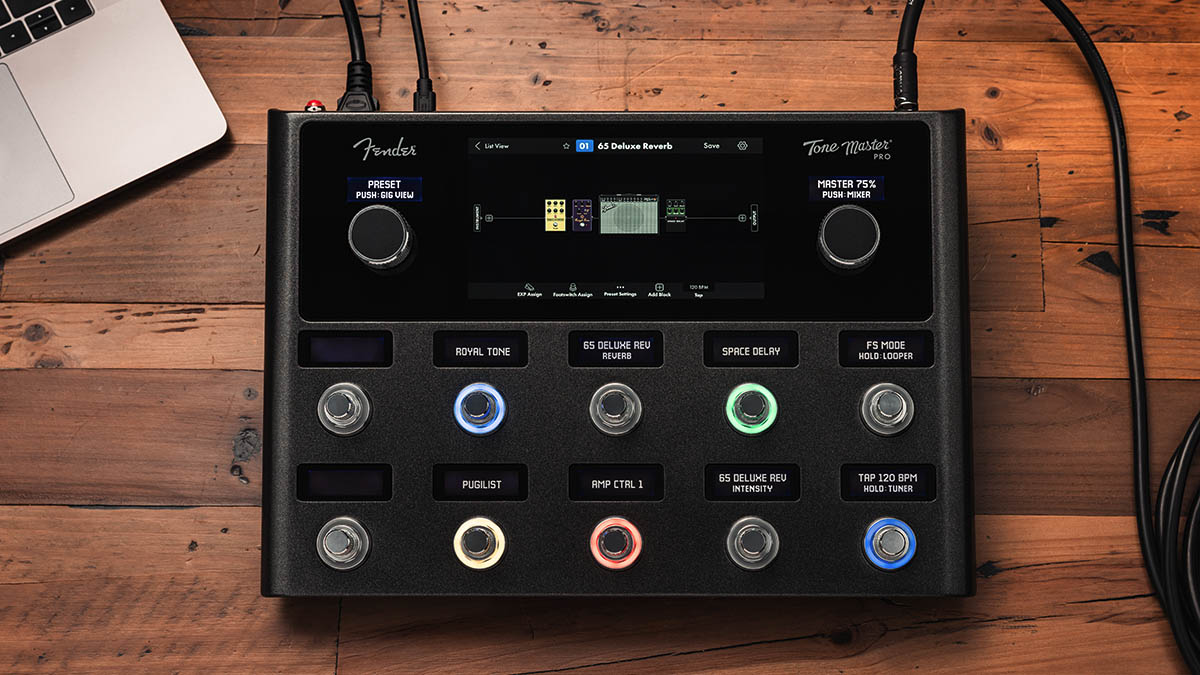
It’s a process of refinement. Even in your most contemporary lineups, the Stratocaster is still recognisably a Stratocaster. And you’re right, nobody wants a USB on the guitar.
“It is one of those things where the founders got it really right. The irony is that Leo Fender always said, ‘If I had a hundred dollars to make something I’ll spend 99 dollars to make it work and one dollar making it pretty.’ but the design language of the French curves and the contours, and all of those things, are so comfortable and fit in the present tense.
The Strat doesn’t really look retro. Depending on what finish you put on it, it looks completely of the moment and of the time, and that’s a real testament to the design language
“It doesn’t really look retro. Depending on what finish you put on it, it looks completely of the moment and of the time, and that’s a real testament to the design language.
“The guitar is revered as an object that [lasts]. Phones have an obsolescence built in. The input jack can change. People expect to replace these things. Whereas a guitar is something that people don’t want to become obsolete, and so that is why I think there is this desire for it to remain kind of unfettered.
“All of that other stuff – the outboard gear, the electronics – can continue to evolve but the thing that you hold close to your body, that becomes part of you, remains constant and true. You don’t have to keep evolving that.”

And just as long as there are people making them sound good, making them look cool, then we are all good.
“Yeah, the current state of music, where it’s not going to the record store and here’s the new record, chronology has been flattened. You know what I mean? Someone can discover Black Sabbath or Nirvana or Isaac Hayes. They can discover it today as though it was a new artist. It’s like a level field between something that’s a year old and something that’s 50 years old, or something that’s brand new, and I think that that, and the idea of reverence of seeing these old images of Keith Richards, you see these old images and they’re burned into your sub conscience.
“Classic doesn’t mean outdated anymore. Levi’s jeans are cool because they are the OG. That exists in the guitar world as well, and I think that as long as you keep an eye on the future and you are looking forward, the past can benefit you but the present and the future are still open to you. Because it’s not about the past and the future! My kids will come in now and say, ‘I’ve just heard this new band!’ And I’ll say, ‘It’s not a new band.’ It’s just new to them.”
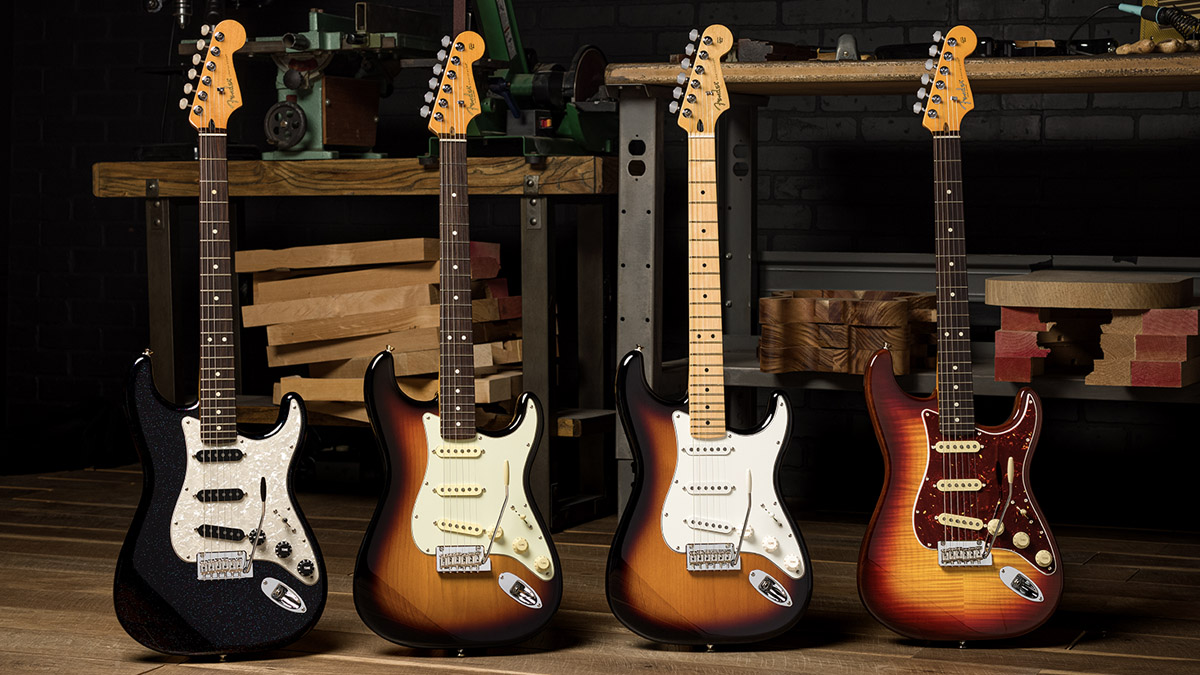
Seven decades is a long time. What has made the Stratocaster last?
“The thing that makes the Strat endure, and what will continue to make the Strat endure, is that it is not overbearing and it is transparent. You play a Strat, you can hear that it is a Strat. It has a sound that people know, that people love. You can hear David Gilmour play a Strat, and it’s a Strat. Stevie Ray Vaughan, Jeff Beck, whoever. But you also hear that it is David Gilmour. You hear that it is Stevie Ray Vaughan. It is half the Fender voice and it is half the artist’s voice
People are reverent of amps but a lot more open to them changing. You don’t saw the horn off a Stratocaster but you can do some things with an amp
“The Stratocaster will continue to be fresh as long as someone new is picking it up. With a lot of instruments there is maybe touch velocity and a number of things that you can do to put your imprint on things, but a guitar, it’s the pick attack, it’s how hard you’re fretting, it’s what your vibrato is like. There are hundreds of nuances.
“We could all strike the same note or play the same line and have it sound completely different. With the Stratocaster we aim to really to celebrate that.

“We always talk about the Stratocaster – especially in the business – as the American Pro Stratocaster, the American Vintage II ’61 Strat, and the differences between those Strats, but it’s like, let’s take a minute, zoom out, and just talk about what’s great about the Strat. How you can modify it so easily. Nothing is more than a couple of screws away.
“Pete Townshend quit playing them for a while back in the day because they were too hard to break. There are other guitars, you drop ‘em and they break, and these are just built like tanks. And the tone, from the bridge pickup to the neck, and how your personality comes through, all the beautiful, general things about the platform that we don’t really talk about because we go right into the weeds.
“We talk about this one has a compound radius [fingerboard], this one has narrow tall frets, this one has hot pickups, this one has underwound pickups. And so my goal would be really reintroduce just the general beauty of the Strat as the form, as the platform, and not really about the specifics of the models.”

Because players' tastes change, and the Strat has been augmented over the years to accommodate them.
“You look at a Strat and it is definitely a Strat, but it definitely has evolved, and it always did. A ’54 Strat was a U neck. It was ash. It was two-tone. And as you got to ’57, it was a V neck. It was alder. Then it would become rosewood [on the fingerboard] in ’58/’59.
“For a better part of the decade it was all about overwound, hot pickups that were kind of screaming out of the guitar into the amp, and then with the effects boom people got more into underwound pickups as a baseline, where you could start to add layers, and so we are always following – and trying to lead – where those voices are going, and what’s worked.”
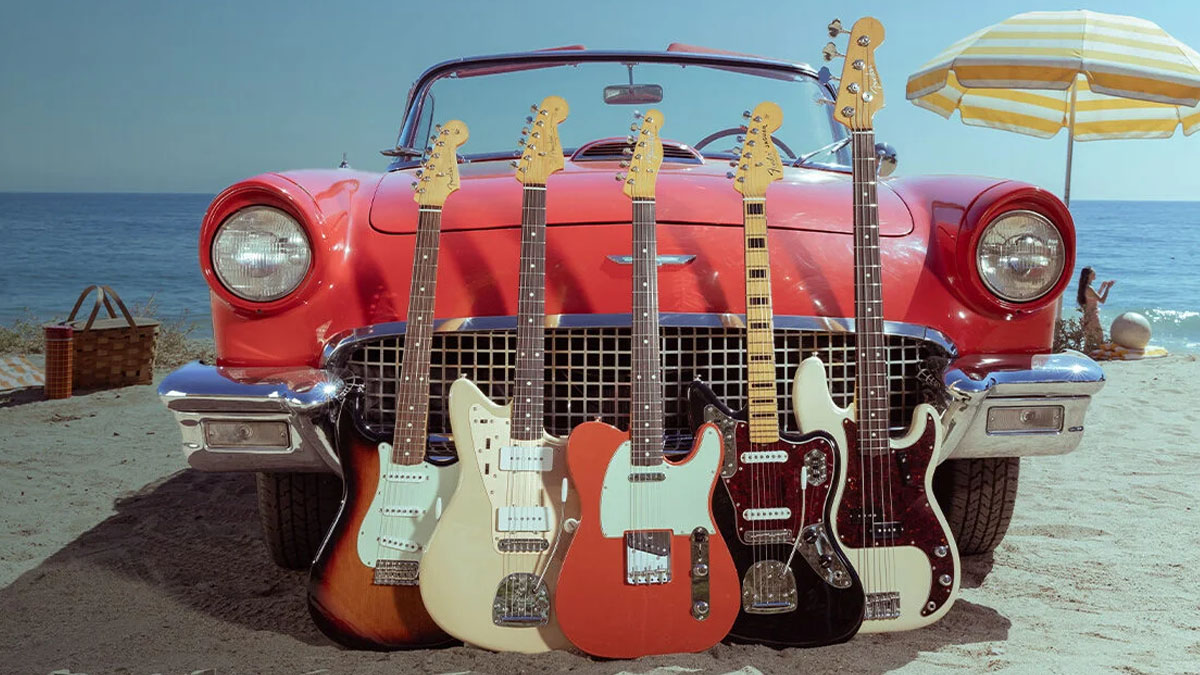
When did you start working on the 70th Anniversary Strats, and is there a similar lead time to artist collaborations?
“It varies. There’s always something going on in the R&D department. Sometimes things just come off the shelf and get folded into the new thing that we are doing. But I would say 18 months out, over a year out. ‘Okay, what are we going to do here? What do we think that is cool?’ And we have to have a vision.
“There are so many guitars in the range anyway so what’s special? What can we do that’s not like something that is already the range? Something that shows off the beauty, the singularity of the Strat and the form? Some of it is very cosmetic, dressed-up celebratory, the tuxedo look which is like the plain-top guitar that we are doing. And some of it is an homage to the first [Strats]. And some of it is going to be looking forward.
“The guitar R&D timeline is much quicker than electronics, like the Tone Master Pro or something like that. That’s a five-year job.”
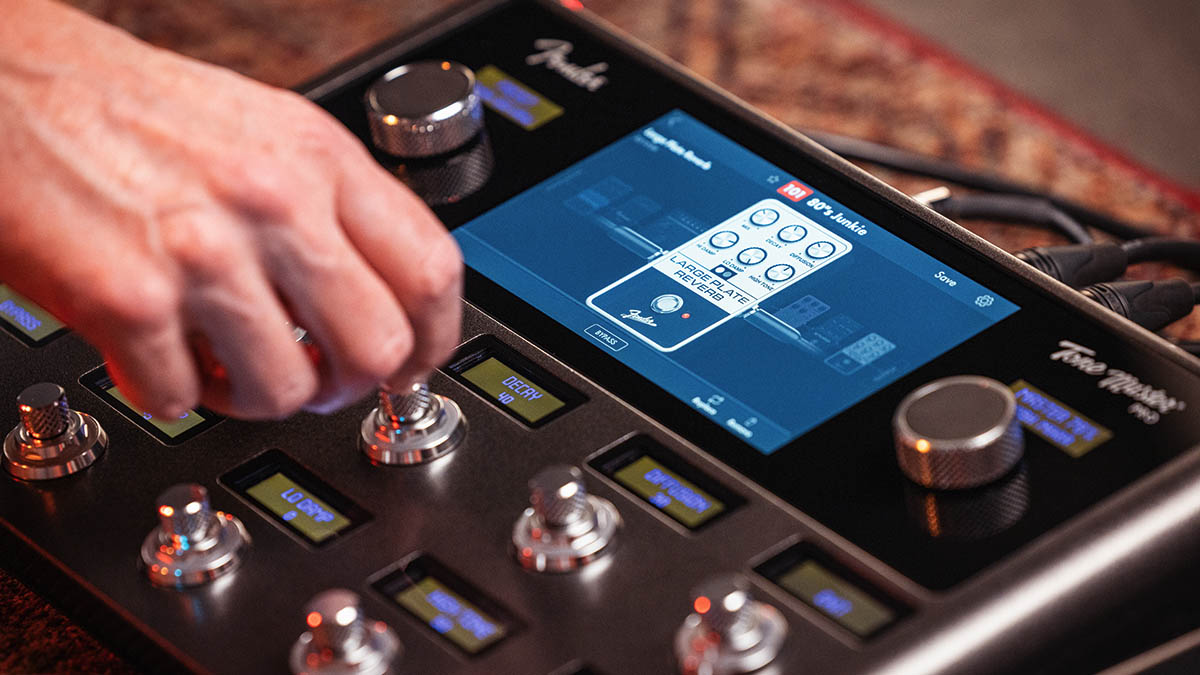
We’re at an exciting point with this dialogue between tube amps and digital, and we’re seeing some hybrid models now, onboard cab sims, etc. Might we see an update to the core Fender amps with, say, any of those modern features. Could see see a Princeton with an effects loop or something like that?
“Yeah, I think that’s all hyper valid. There’s a sacredness to guitars. People are reverent of amps but a lot more open to them changing. You don’t saw the horn off a Stratocaster but you can do some things with an amp, and – dating myself here – 20-plus years go when I came the R&D department it was all analogue engineers, it was all tubes, cabinet design. Everything was analogue even if we did have some solid-state stuff.
“Go to the Cyber-Twin we get into digital and basically the makeup of the department has to completely change because you have got all of these digital engineers, DSP engineers, embedded software, UX, UI, all of that stuff, but the beauty at Fender is you’ve got them both in the same office. You’ve got the person doing the hand-wired Twin and they are next door to the person that’s doing the Twin model for the Tone Master.”
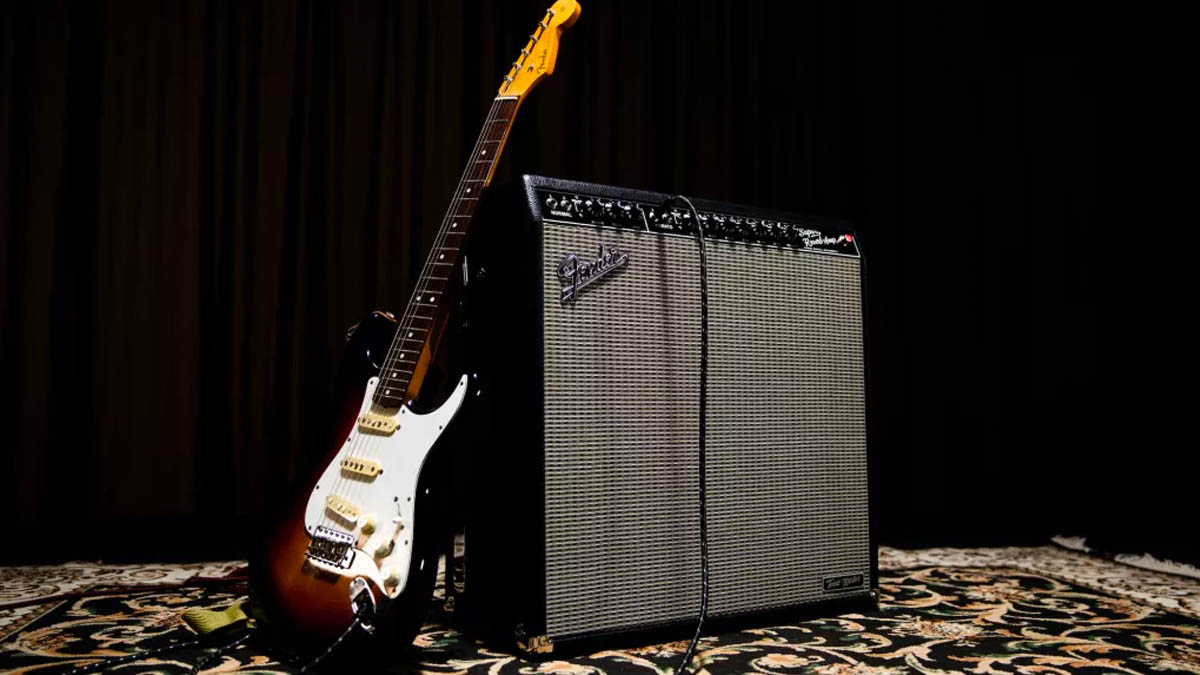
The Tone Master series was a big leap forward for that digital Fender guitar amp.
“It is really not about a tech product that is trying to copy something, it’s really more about taking that 70-plus years of knowledge and melding the two things together. I think the first Tone Master amps were the first foray for us into taking our sacred tube family and starting to digitise them.
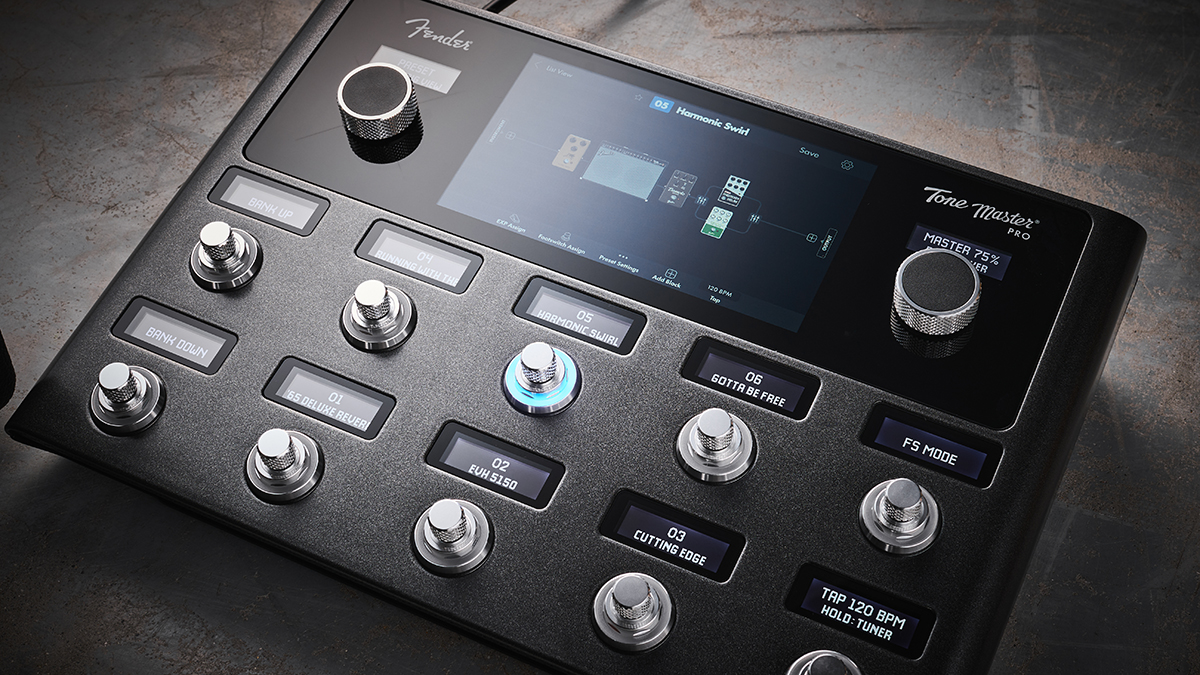
• Fender Tone Master Pro & Tone Master FR-12 review
In a sea of flagship floor-based amp modelling, Fender has made its mark but it might just be the full-range cab that steals the show.
“We really did not expect the level of acceptance. We thought that there was going to be a lot more pushback. But as were did each one, what we are finding is that people will have both. They will have the tube amp in their home studio and they’ll take the Tone Master out to gig.
“As we built those Tone Master amps, those were becoming the foundation and the structure and wireframe for what was going to be the Tone Master Pro. Fender means tone and if you want that tone delivered digitally or if you want that tone delivered moving a lot of air, we want to be there to offer that. We don’t want to pen ourselves in and say, ‘No, we’re a tube amp company and this is what we do.’”
And it took five years to evolve this technology and develop the Tone Master Pro?
“It was five years that we worked on Tone Master Pro. Other companies in that [modelling] space are or were more about technology and building this platform, and then having people create models or profiles. The vessel is the product. With us, the tone is the product, but we can also build the vessel.
“The thing that we really focused on was making it simple. Fender amps – an old silverface, or black panel or a tweed – it’s five knobs, six knobs, whatever. So how do you take this complex technology and how do you make it simple? No manual.”
No one wants to read a manual, ever!
“I think that there is a whole new market. Axe-Fx, Kemper, Helix... there are tons of people on the sidelines that were like, ‘That seems cool but it’s too complicated. It’s too techy. It’s too hard. I don’t want to mess with it.’ I think that we are actually growing the size of that business. We’re not taking a part of someone else’s business because by making it inviting and easy to use it brings more people to the party.
“I played 12 gigs this year. I did an album of original songs. And I used a combination of stuff. I played a gig, the last gig of the year, with a Tone Master Pro, no amp, first time I’ve ever done that in my life. It was brilliant.
“I was nervous. Because it’s foreign! And on the record I did the same thing. It was a mix of live amps, plugins, Tone Master Pro. It was an abundance, a creative pool to select from, and I thought it was really freeing and brilliant.”
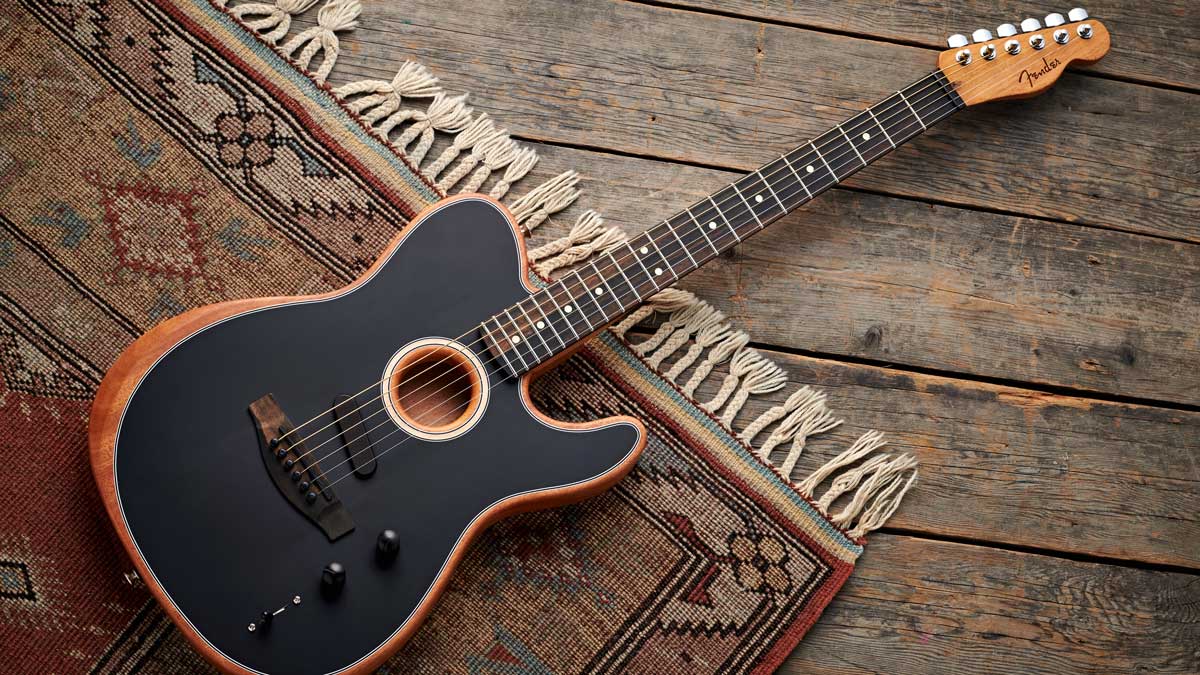
It presents opportunities for Fender too. Because typically, what you do is you’ll design something like the Acoustasonic, quite radical, but once it gains acceptance you then apply that design idiom to other contexts. And we could imagine you doing that with the Tone Master Pro technology, rehousing it in different formats.
“Yeah, 100 per cent. Is there an all-software version of that that could exist? It becomes modular. As you can see with a Tone Master Princeton or Super Reverb, and then in the Pro, it just opens up a new world.”
The thing that we really focused on was making the Tone Master Pro simple. Fender amps – an old silverface, or black panel or a tweed – it’s five knobs, six knobs, whatever. So how do you take this complex technology and how do you make it simple?
You mentioned plugins, you ready to move into software?
“No. I don’t think at this time we’re completely there but I think that the possibilities are super interesting.”
So what is next. Are we going to see more Road Worn finishes in 2024.
“Yes! And I think the Mike McCready [Stratocaster] was a new high-water mark for us. As you can see we are totally continually to advance that, from the first Joe Strummer model in 2007 till today, we’ve really come a long way.”
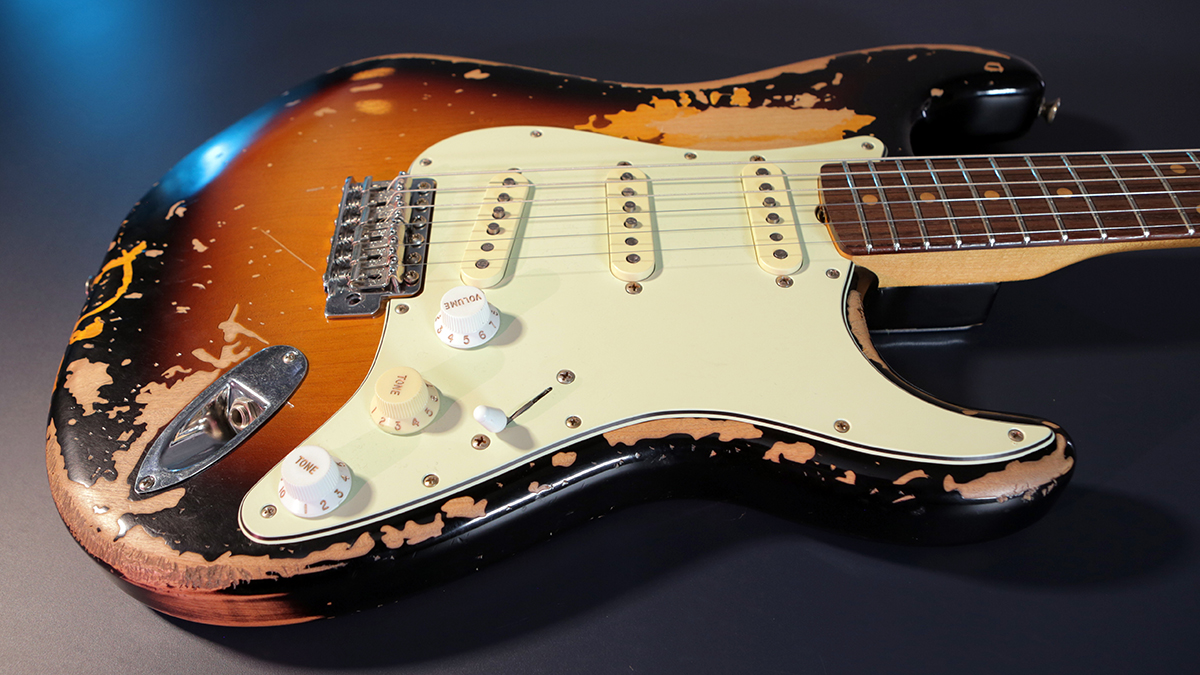
You're on a roll now. What about the Acoustasonic series? Are we going to see more?
“Yes, and I would keep my eye out for some artist models, with some different features.”
And, finally, what can we expect from the acoustic guitar lineup? Because you have said you intend to grow it?
Acoustics are a long game, so I think that you don’t come out with a model and then all of a sudden you are top of the heap. Martin and Gibson, they go back to the turn of the 20th century
“Acoustics are a long game, so I think that you don’t come out with a model and then all of a sudden you are top of the heap. Martin and Gibson, they go back to the turn of the 20th century, and even Taylor is seen as a new player and is a 50-year old brand, so it’s just a commitment we have to the long game, continuing to [develop] our space there.
“Because we are not just about the electric guitar, we are not just about guitar; we are about music, and so you could see the Acoustasonic, the Highway Series, the California Series, all of the things we are doing, we are definitely committed to the space. We’ll continue to work on getting players thinking highly of our acoustic offering.”
Jonathan Horsley has been writing about guitars and guitar culture since 2005, playing them since 1990, and regularly contributes to MusicRadar, Total Guitar and Guitar World. He uses Jazz III nylon picks, 10s during the week, 9s at the weekend, and shamefully still struggles with rhythm figure one of Van Halen’s Panama.



